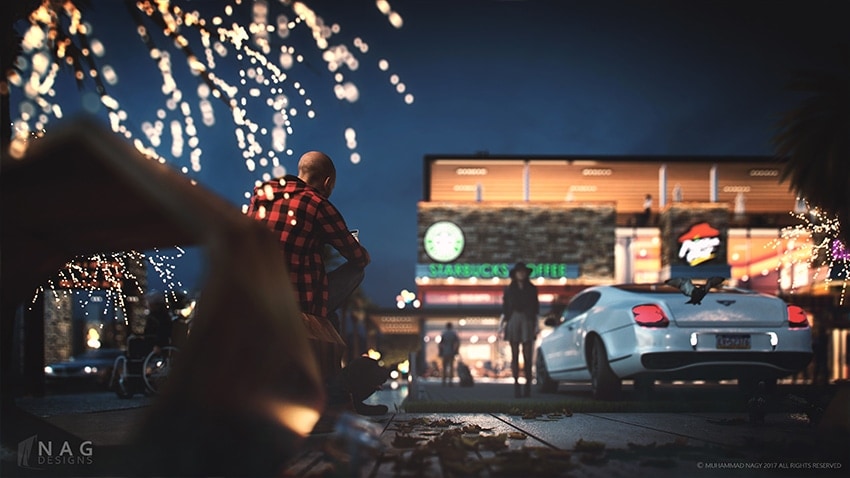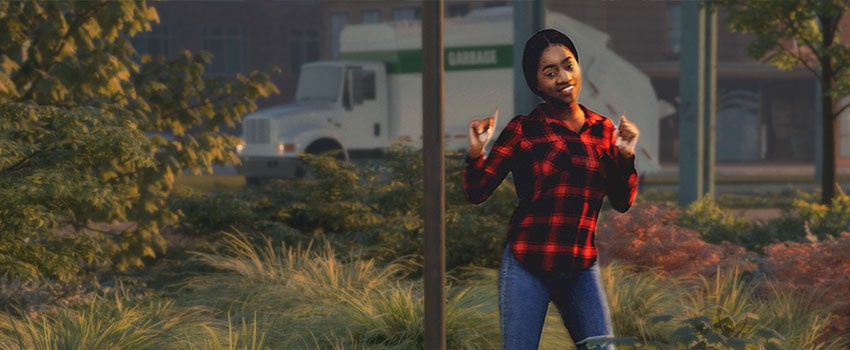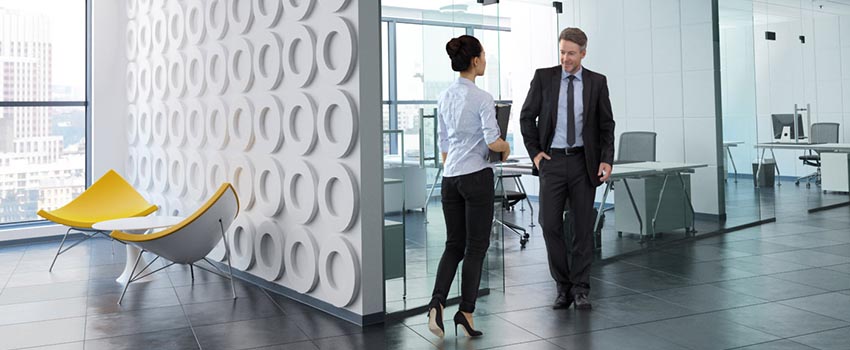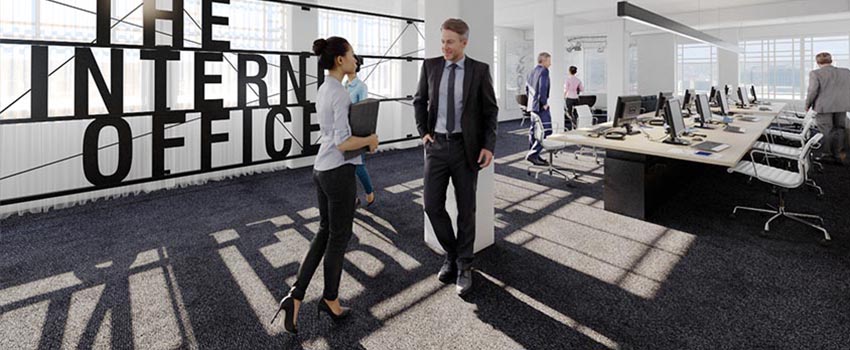3D People for Archviz – Are They Worth a Try?!

Thanks a lot to our guest editor: This article was kindly created by Muhammad Nagy by NAG Designs. Thank you so much for contributing to our blog and giving some insights into your producton pipeline.
“Fantastic architecture suspended between dreaming and reality”
The Finnish architect Juhani Pallasmaa described spaces and environments of Friedrich Wilhelm Murnau film The Cabinet of Dr. Caligari (1920) and Robert Wiene one Nosferatu (1922).
From the early beginning of film-making history, architecture and cinema industries have a tightly bound interaction. There is always a multifaceted dialogue running and a high level of analogy between both disciplines is existing.
In the industry of film-making, when u start to analyze a produced cinematic piece of art, behind the scene you can find a film director, who controls the film’s artistic and dramatic aspects and visualizes the envisioned screenplay. In fulfillment of such vision, you can find the film actor who portrays a character to spread feelings and messages to the audience. Those feelings also can’t be reached without the efforts of a creative cameraman, who shows the audience what the director envisioned in the most dramatic look. All this setup must get enclosed by a storytelling architectural environment to form the background of the scene.
In architecture, especially in digital photography and visualization scopes, the architectural visualization production pipeline is also following the same setup of film-making industry, but the architecture is the foreground of the focus here. The idea starts with an architect who has a design concept and a message to convey through his building to satisfy his client’s needs, then comes the effort of an architectural visualizer who sets his digital camera and tries to capture the most impressive look of the desired design piece.
But is there something missed here?! Who will add life to the scene and convey its dramatic depth, to let it loudly express the feelings to the client and to represent how your client interaction with the design piece will look like to act formal, relaxed, happy, curios … etc.?
This is the power of adding 3D PEOPLE to your scene! To highlight the factor of YOURSELF,
And not to SEE, but to FEEL!
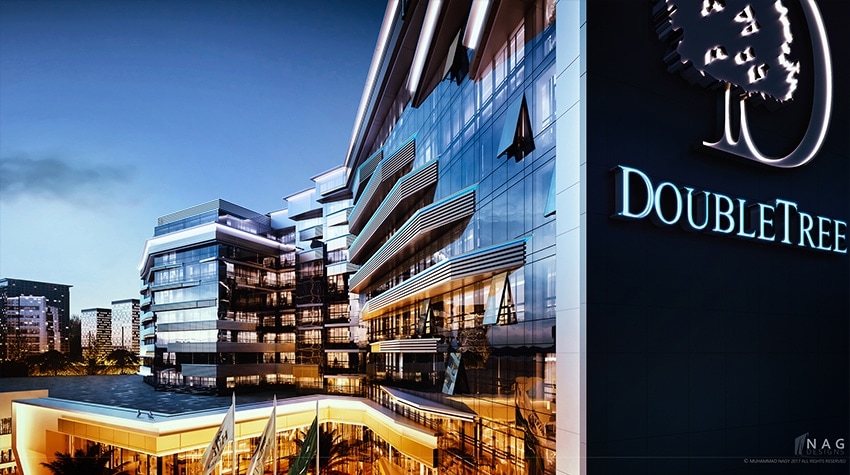 Hilton DoubleTree Hotel, Jazan, KSA – Image courtesy of ©NAG Designs.
Hilton DoubleTree Hotel, Jazan, KSA – Image courtesy of ©NAG Designs.
Being the founder of and design manager at NAG Designs (an architectural design studio based in Egypt specialized in digital photography and visualization), I experienced quite different types of clients in the field of our industry. Although they all have a wide difference in their tastes, most of them agreed to feel the real interactions and feelings with their buildings through adding people to the scenes.
Cutout People vs. 3D People?
So, we asked ourselves the consecutive question, 3D People or cutout ones? Which one is worth using it?
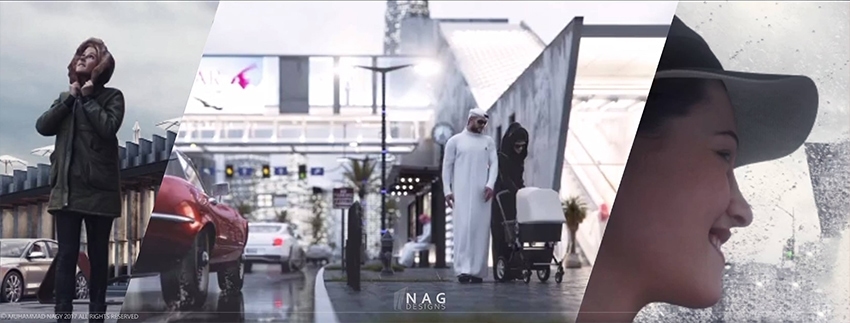 3 of our artwork pieces in a Renderpeople promotional video – Image courtesy of ©NAG Designs.
3 of our artwork pieces in a Renderpeople promotional video – Image courtesy of ©NAG Designs.
In fact, we tried many different workflows to have a clear answer to that question, and to be honest, there is no ideal workflow to follow, it’s just to know many different workflows, and create your own with a combination of the best things you experienced.
We concluded that using 3D People is the fastest, most effective and most time saving workflow to go through for some reasons:
- You will never meet such stable decisions and peaceful soul in your client. While using cutouts, you will lose all perspective matching of lights and shadows you applied to your people, if he/she desired for no reason to relocate your camera or changing the sun light direction!!
- Inserting cutouts in your software as bitmaps with opacity option will help you get some realistic lights and shadows, but unfortunately their FLAT LOOK can’t be avoided.
- In fast tracking jobs, sometimes we found no time to composite cutouts, so insertion of 3D People is the only way out.
- For marketing campaigns some clients request to let the building stakeholders to be the HERO of the visualized scene. This issue is an easy job for 3D People staff to do.
For all those reasons and more, we experienced that Renderpeople products are the most effective staff to fit all our objectives. And for now, we are happy to share some of our work experience using their models with their great community.
At NAG Designs, we always try to express a cinematographic essence of architectural experience in our visualizations. Commercially we found that our client’s focus could be roughly divided into 3 levels: Design Elements Focus, Design Activities Focus & Design Feeling Focus.
1. Design Elements Focus
Most of the work we have experienced is totally oriented to focus on the building itself and its beautiful design elements but, no doubt, to feel also that the visualization can breathe with some actors who add life and represent human scale to the scene. We usually follow some compositing rules like Rule of Thirds and Golden Ratio to pick the best place to locate our 3D actor(s).
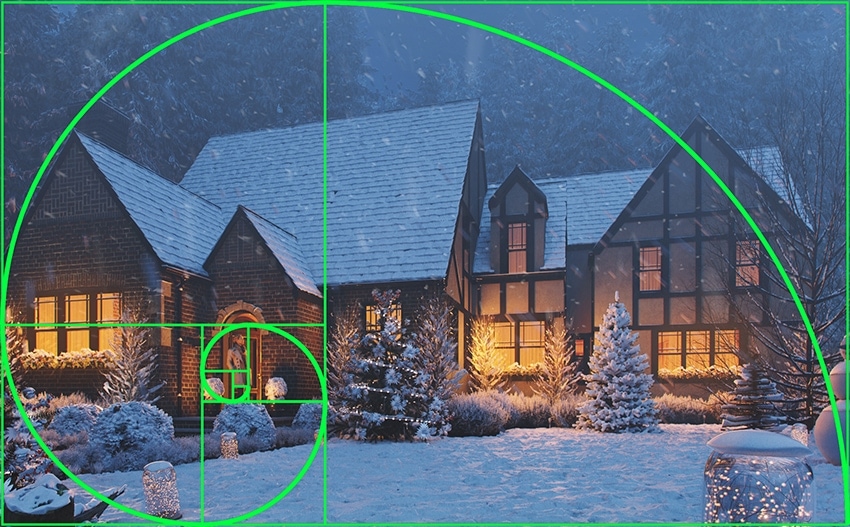 Using golden ration to adjust the placing of 3D People in 800 Wallberg Ave house project – Image courtesy of ©NAG Designs.
Using golden ration to adjust the placing of 3D People in 800 Wallberg Ave house project – Image courtesy of ©NAG Designs.
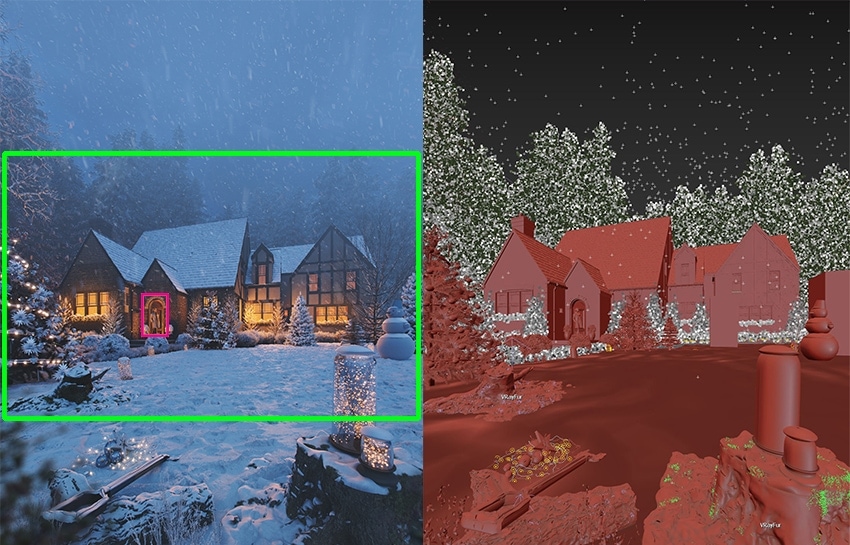 Behind the scene image from 800 Wallberg Ave house project – Image courtesy of ©NAG Designs.
Behind the scene image from 800 Wallberg Ave house project – Image courtesy of ©NAG Designs.
We achieved such result easily using Renderpeople’s optimized version of their models. We use the 30K Polys version for people that are far away the camera and the 100K one for those who are closer.
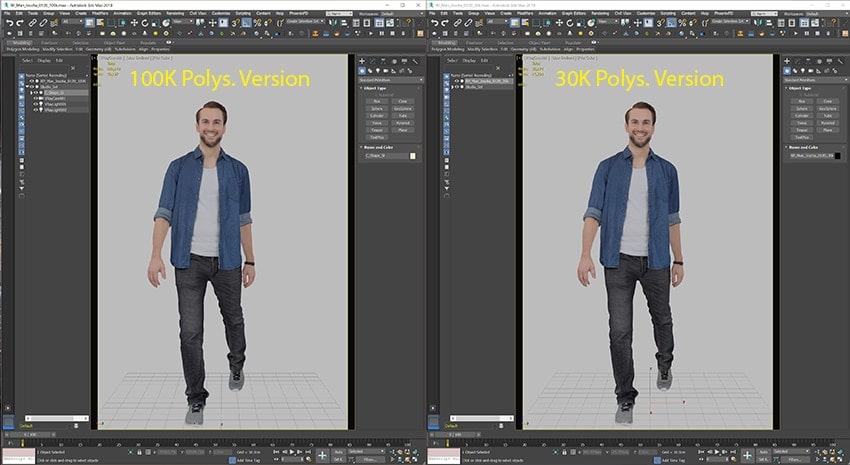 Renderpeople’s different versions of models to fit the intended level of detail – Image courtesy of ©NAG Designs.
Renderpeople’s different versions of models to fit the intended level of detail – Image courtesy of ©NAG Designs.
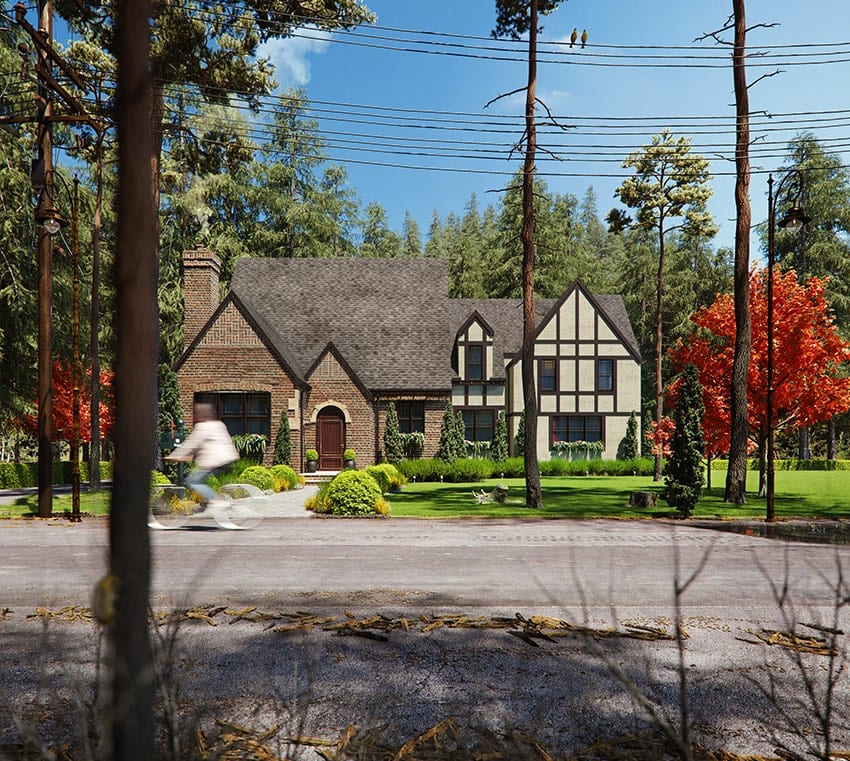 Different glimpses from 800 Wallberg Ave house project to show how Renderpeople models can serve the scope – Image courtesy of ©NAG Designs.
Different glimpses from 800 Wallberg Ave house project to show how Renderpeople models can serve the scope – Image courtesy of ©NAG Designs.
2. Design Activities Focus
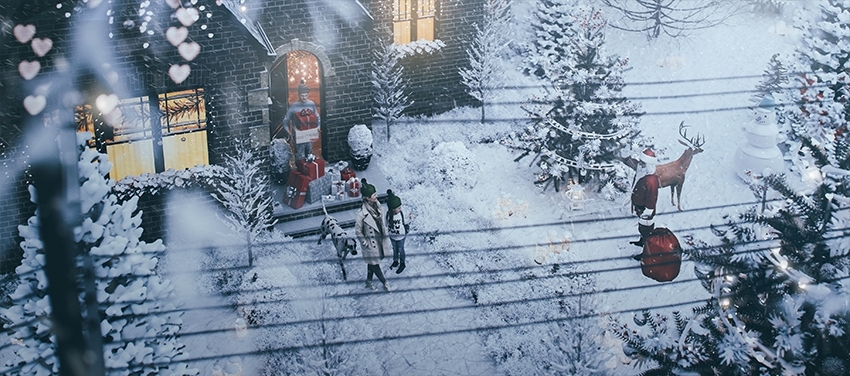 Aerial shot from 800 Wallberg Ave house project to show the family of Renderpeople models celebrating new year – Image courtesy of ©NAG Designs.
Aerial shot from 800 Wallberg Ave house project to show the family of Renderpeople models celebrating new year – Image courtesy of ©NAG Designs.
In the image below the focus is to shoot the activities around the building and how people would interact with such design piece. And so, we need a larger number of people to represent such activities. Fortunately, Renderpeople offers the free Resizer Plug-In, which can help to easily control and optimize 3D People’s textures upon your need (e.g. based on how far they are from the camera where the closer gets higher texture and vice versa). It’s really helpful and a time saver tool for us to overcome the headache of the low memory of the machines.
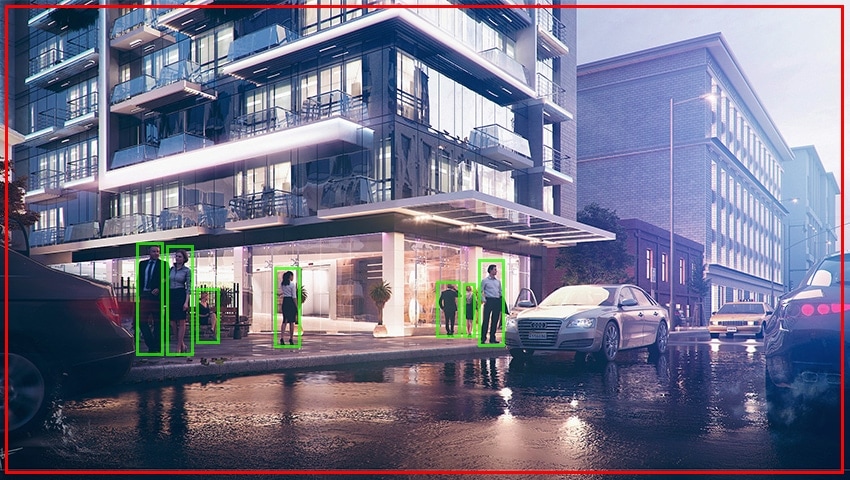 Human eye shot from central suite hotel project in Santo Domingo showing the proportions of used people with respect to the scene size in activities focus level – Image courtesy of ©NAG Designs.
Human eye shot from central suite hotel project in Santo Domingo showing the proportions of used people with respect to the scene size in activities focus level – Image courtesy of ©NAG Designs.
3. Design Feeling Focus
In such level of focus, we clearly need to show the 3D actor’s feelings and emotions. Most of marketing campaigns for projects, such as the one we did for Centro D’ Oro project in Milan, tend to let the client see the design in some sort of emotional and dramatic way. To let him feel happiness, relaxation, cleanness and purity of the house he will buy, or the room he will hire.
So, the 3D People actors play a “SCENE HERO” role in the architectural visualization, and all its emotions should be expressed in a hyper realistic way with high resolution textures and high level of modeling quality, and for that reason, we found that Renderpeople offer 8K+ maps for their models, which is so powerful to fit such demand.
The following scene is one of the favorites we did for the Centro D’ Oro project. The 3D actor Vanessa did a great job with expressing how she is in love with the design and doesn’t pay any attention to her tasty cup of coffee, hehe.
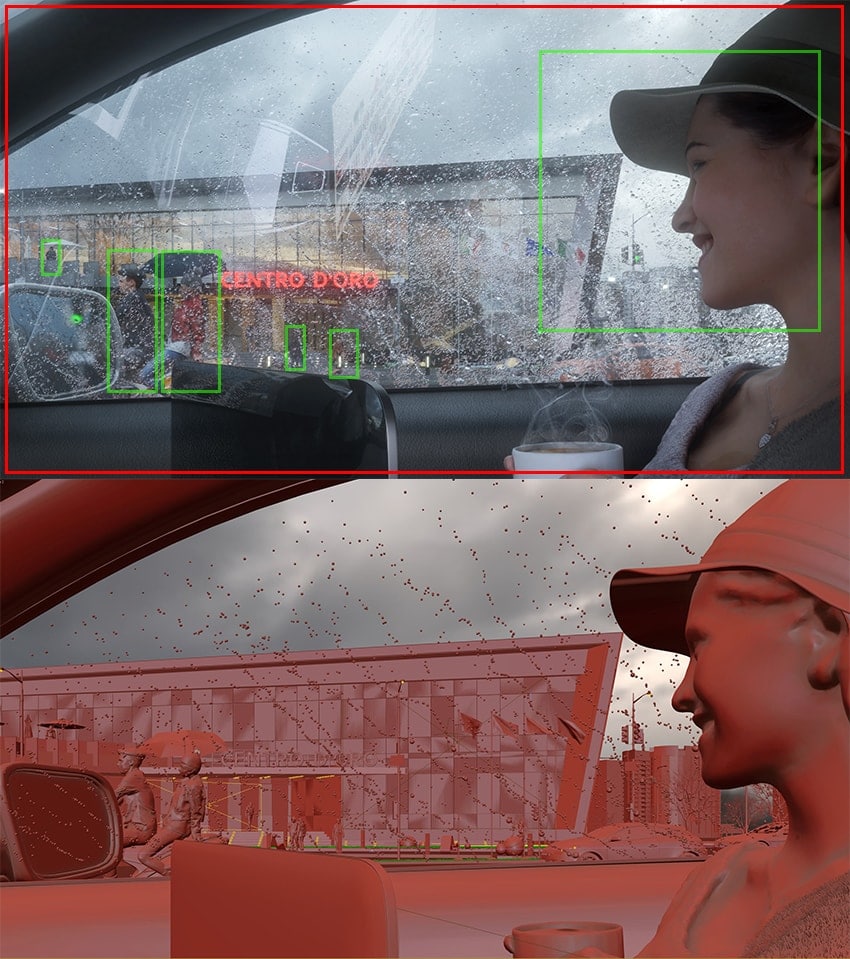 Through-the-car scene that shows what we referred to SCENE HERO 3D People model – Image courtesy of ©NAG Designs.
Through-the-car scene that shows what we referred to SCENE HERO 3D People model – Image courtesy of ©NAG Designs.
Finally, we are so thankful to Renderpeople for their invitation to share some of our experience to the globe. Thanks to you dear reader for your time, and we hope that you gained something new!
Feel free to contact us for more info about NAG Designs experience with Renderpeople products using the following:
Email | nag.designs.eg@gmail.com
Facebook | https://goo.gl/kBf492 – Behance | https://goo.gl/tXcD38 – Instagram | https://goo.gl/95qHxr
And for now, we can say it loudly:
3D People? Yes, they are definitely worth a try!
